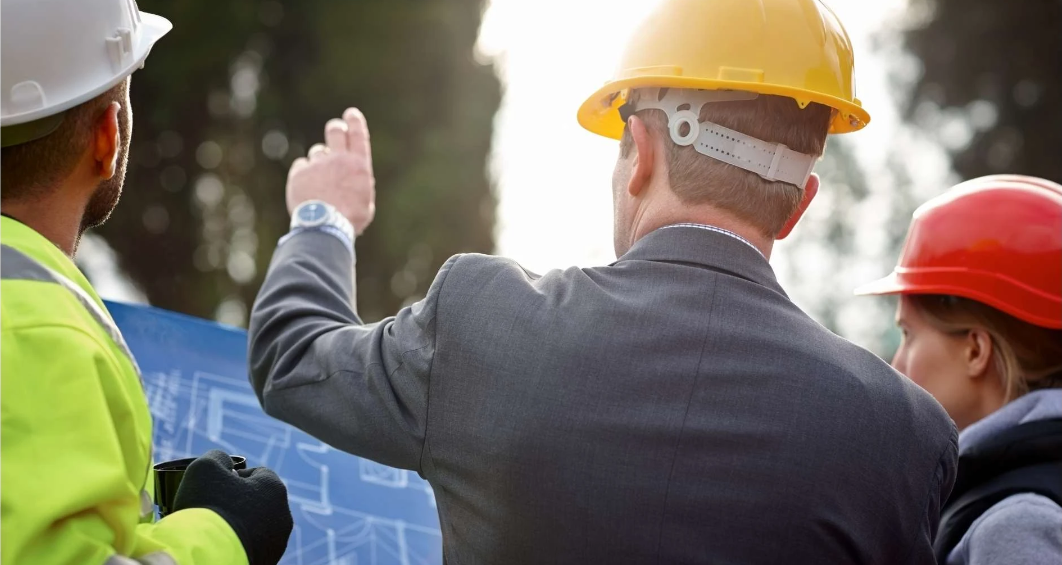Construction is an industry where precision, safety and quality are paramount. Every brick laid, every beam installed and every wire connected must meet stringent standards.
Why? Because lives depend on it. A building isn’t just bricks and mortar; it’s a space where people live, work and play. Ensuring safety and quality control in construction is not just important; it’s essential.
This article explores how project managers can ensure safety and quality control in construction.
Key Components of Quality Control in Construction
There are several key components to quality control in construction:
A solid plan is essential before the first shovel breaks ground. Architects and engineers create detailed blueprints, outlining every aspect of the project. This phase involves a lot of collaboration to ensure every detail is considered. Precise designs help avoid expensive modifications down the line and guarantee that the project can be constructed as planned.
The quality of materials used can make or break a project. High-quality materials ensure durability and safety. Using substandard materials might save money upfront but can lead to failures and increased maintenance costs down the line. Proper material selection involves testing and verification to ensure they meet the required specifications.
Workers need to be professional and knowledgeable. Continuous training and certifications help keep the workforce up to date with the latest techniques and safety protocols. Skilled workers are more likely to perform tasks correctly the first time, reducing the need for rework and increasing overall efficiency.
Regular inspections and supervision help catch issues early. Site managers and inspectors play a critical role in this aspect. They ensure that the work being done complies with the plans and standards. Routine inspections can identify problems before they become major issues, saving time and money.
Materials and processes should be tested regularly. Documentation of these tests helps maintain a record of quality and compliance. This includes everything from soil tests before laying the foundation to concrete strength tests. Keeping detailed records ensures that all aspects of construction can be reviewed and verified, providing a clear history of the project’s quality control measures.
How to Ensure Quality Control in Construction
Ensuring quality control in construction involves a series of steps that start from the planning phase and continue until the project is completed. Here are some ways to ensure quality control:
Detailed Planning
A detailed plan sets the foundation for a successful project. This includes thorough architectural and engineering designs, as well as a clear understanding of the client’s requirements. Good planning considers all aspects of the project, including potential risks and how to mitigate them.
Stringent Material Checks
All materials should be checked for quality before use. This involves testing materials for strength, durability and compliance with industry standards. Ensuring materials meet specifications prevents future problems and provides the structural integrity of the project.
Regular Inspections
Frequent site inspections are crucial for identifying potential problems early on. These inspections should be conducted at different stages of the project, ranging from foundation work to the finishing touches. Inspectors assess compliance with design specifications and safety standards, ensuring that each construction phase meets the necessary criteria.
Skilled Workforce
A competent workforce is essential for maintaining quality control. Employees should receive proper training and certification. Ongoing education and training programmes help ensure that skills remain current. Experienced workers tend to be more efficient, make fewer errors and are more likely to follow safety protocols.
Use of Technology
Technology can significantly enhance quality control processes. For example, drones can be utilised to inspect sites, offering an aerial perspective of the project. Building Information Modeling (BIM) helps in planning and managing construction projects more efficiently. BIM allows for better visualisation of the project, clash detection and improved collaboration among stakeholders.
Clear Communication
Effective communication among all parties is vital. This involves regular meetings, updates and a transparent chain of command. Strong communication ensures that everyone is aligned and that any issues are resolved quickly. It also aids in managing expectations and preventing misunderstandings.
Training Programmes to Improve Safety and Quality Control
Training programmes play a crucial role in improving safety and quality control in construction. Here are some ways training can make a difference:
Construction (Design and Management) Regulations training helps workers understand their responsibilities in managing health, safety and welfare on construction sites and ensures compliance with legal standards.
This training programme educates workers on safe practices when working at height, including the use of safety equipment, risk assessment and emergency procedures to prevent falls and injuries.
First aid training equips workers with essential skills to provide immediate medical assistance in case of injuries or emergencies on site, ensuring prompt and effective response.
This training teaches proper techniques for lifting, carrying and moving materials safely, reducing the risk of musculoskeletal injuries and ensuring safe handling practices.
This training focuses on identifying and mitigating common hazards that lead injuries and fatalities from slips, trips and falls. Taking a slips, trips and falls course makes workers more aware of environmental risks and empwers them to help minimize overall risk of accidents.
Ensuring Compliance with HASAWA 1974
Safety is a significant concern in construction. The Health and Safety at Work Act 1974 (HASAWA) is a crucial piece of legislation in the UK. This legislation requires employers to take reasonable measures to provide safety and well-being to their employees while at work. It also safeguards the public from risks associated with work activities.
The HASAWA Act 1974 lays down general principles for the management of health and safety, encouraging a proactive approach. It mandates managers to provide a safe working environment, proper training and necessary safety equipment. It also mandates regular risk assessments to identify and mitigate potential hazards. Compliance with the HASAWA Act is not just a legal obligation but also a moral one.








